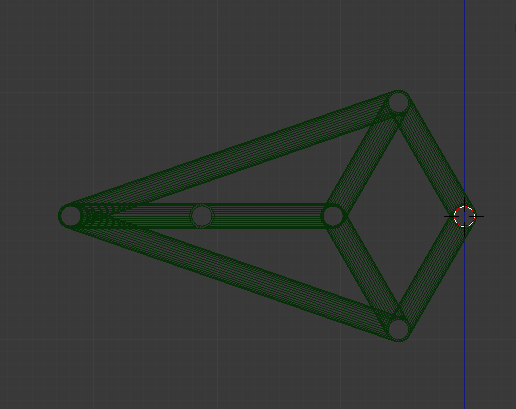I'm trying to rig a model of a Peaucellier-Lipkin mechanical linkage. While inverse kinematics for a chain of bones in the armature works well for some of the linkage, I don't see how to create the closed loop portion. There must be some way to constrain the tails of two bones to stay together, but I am having trouble finding it.
Here's what I have so far.












